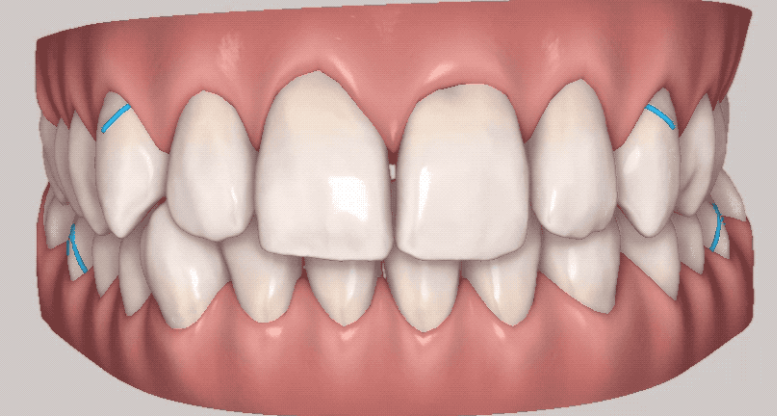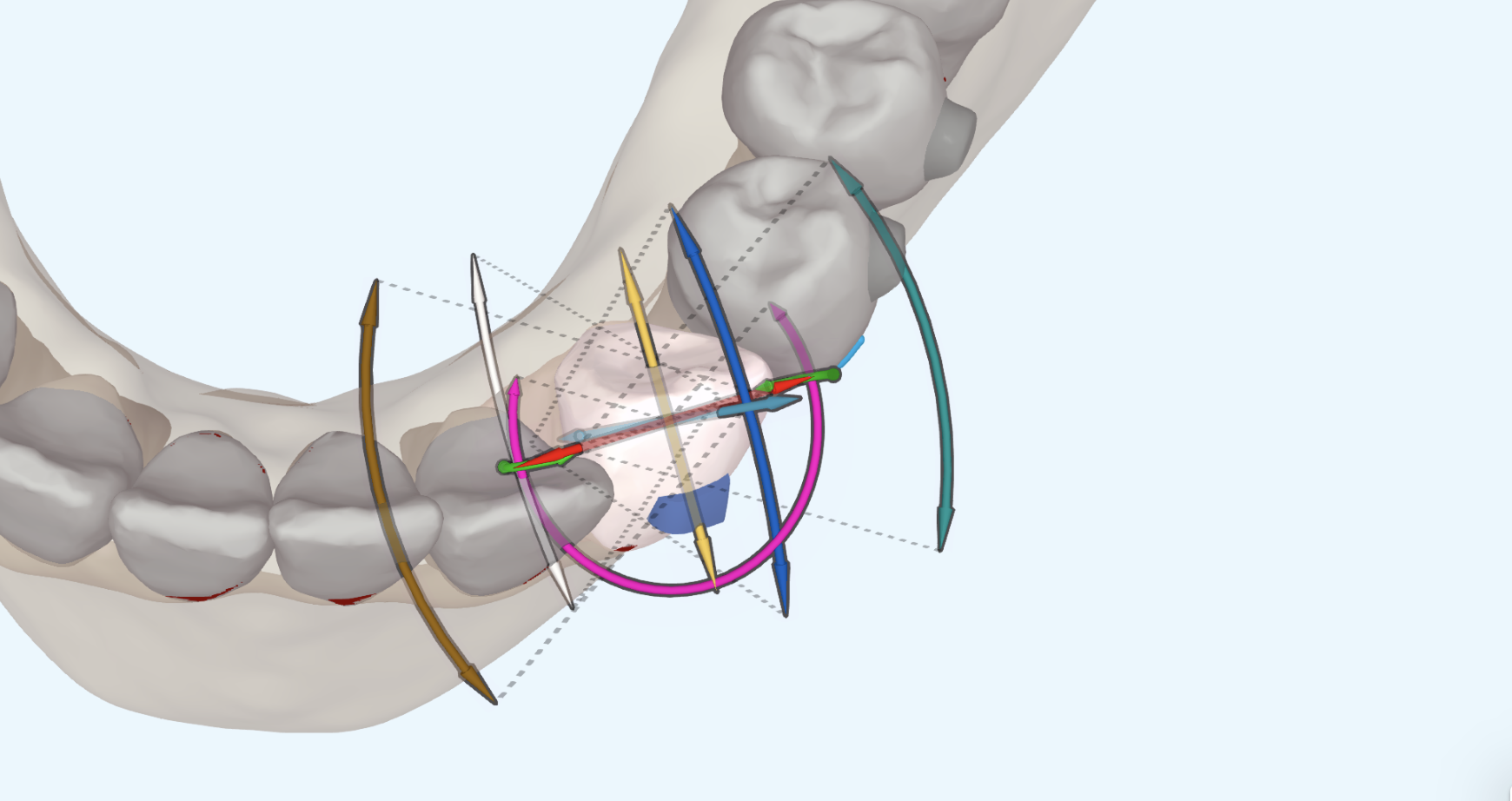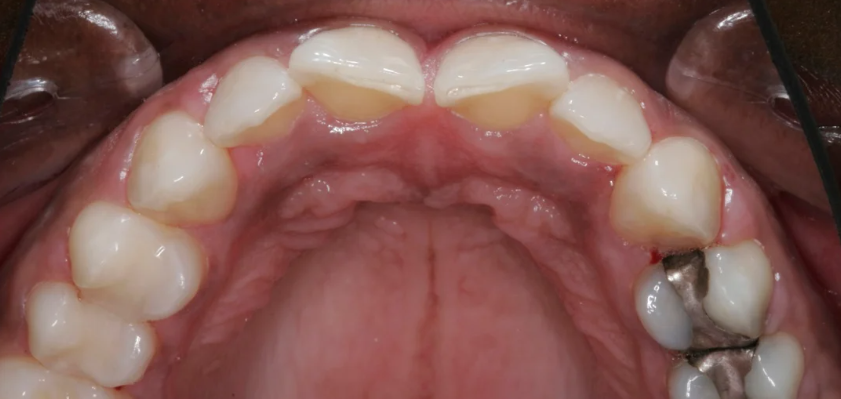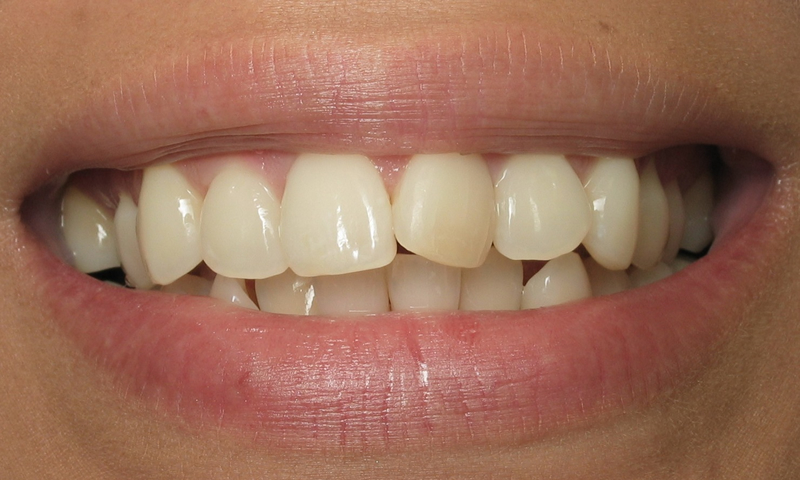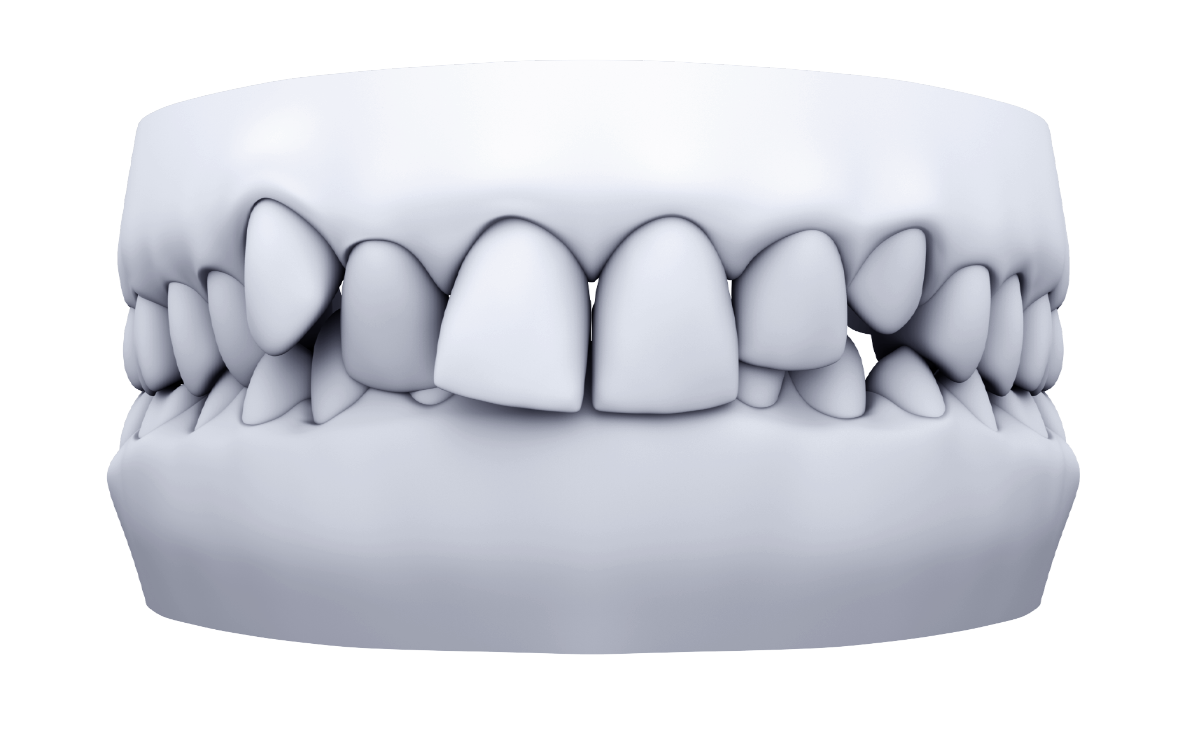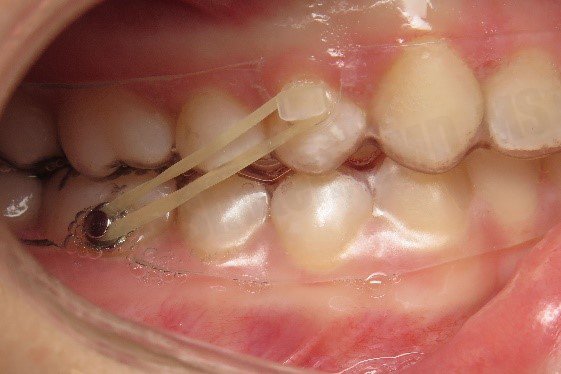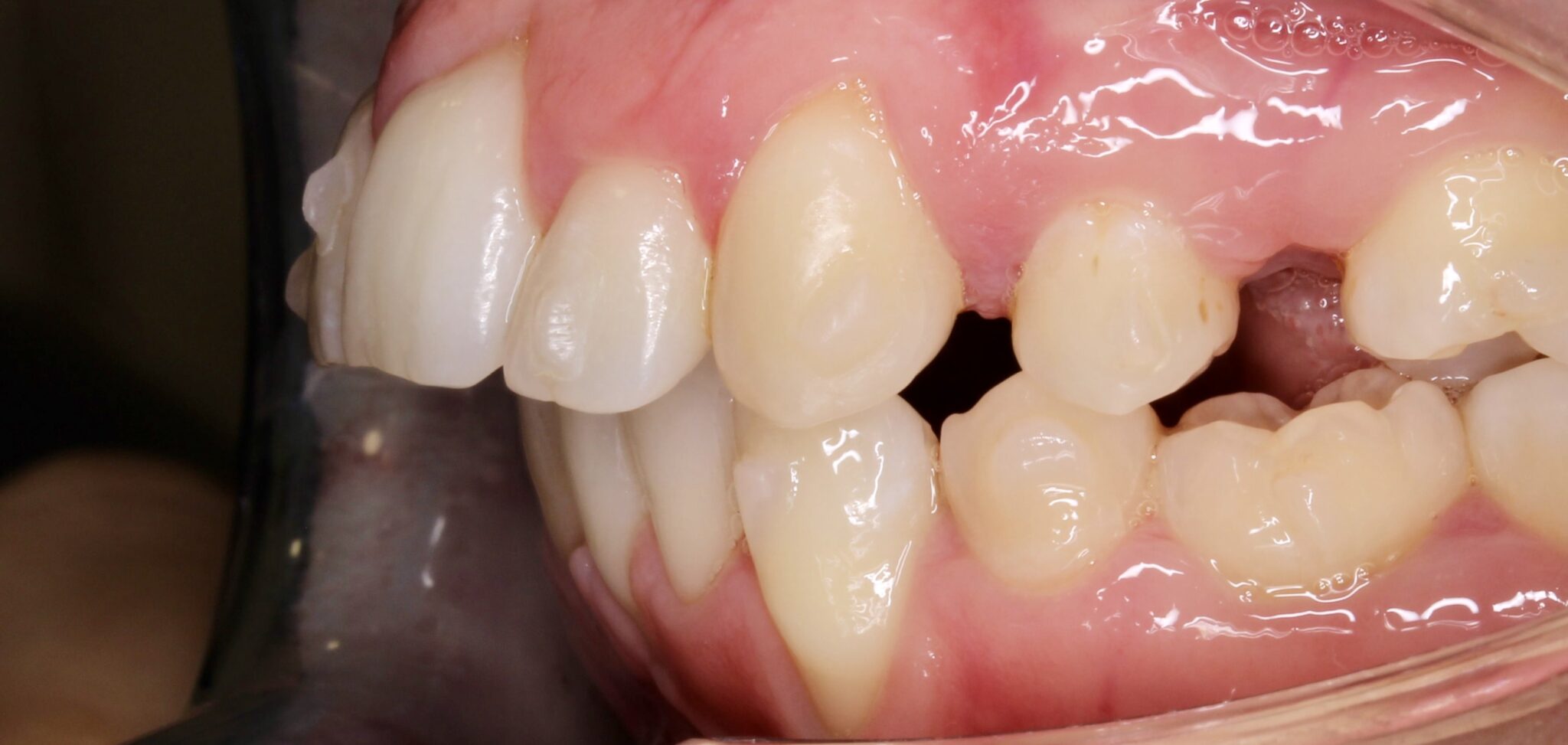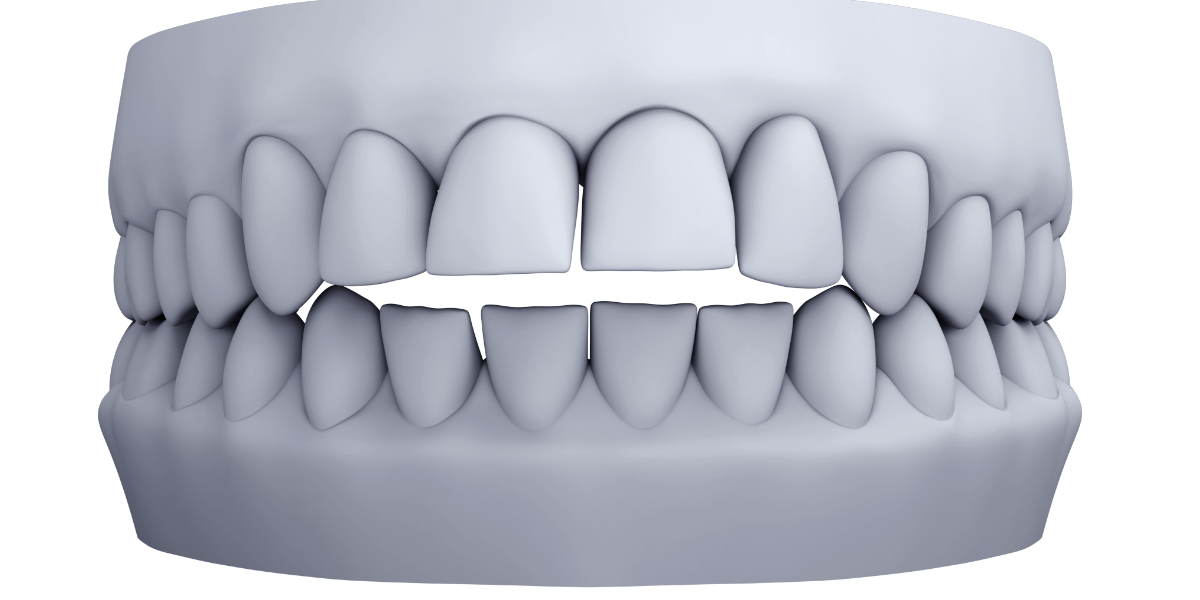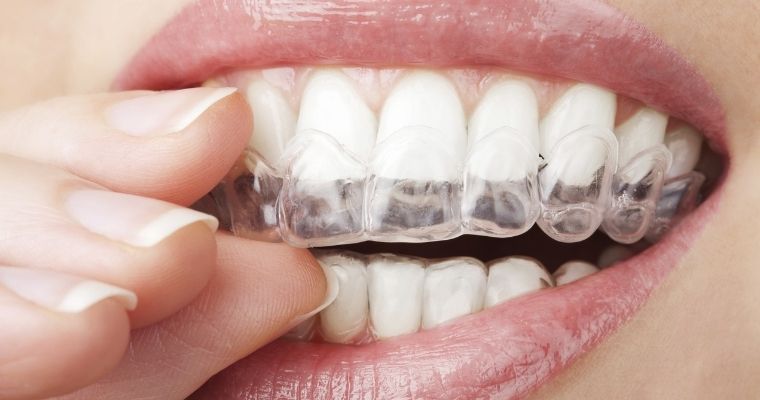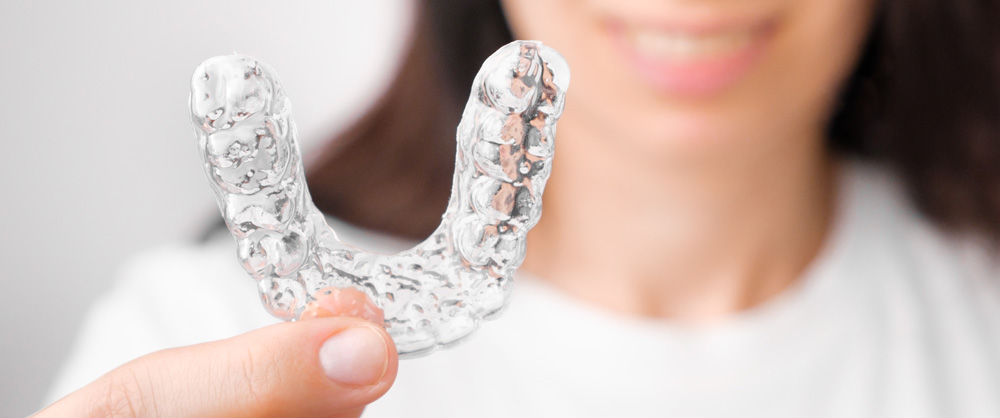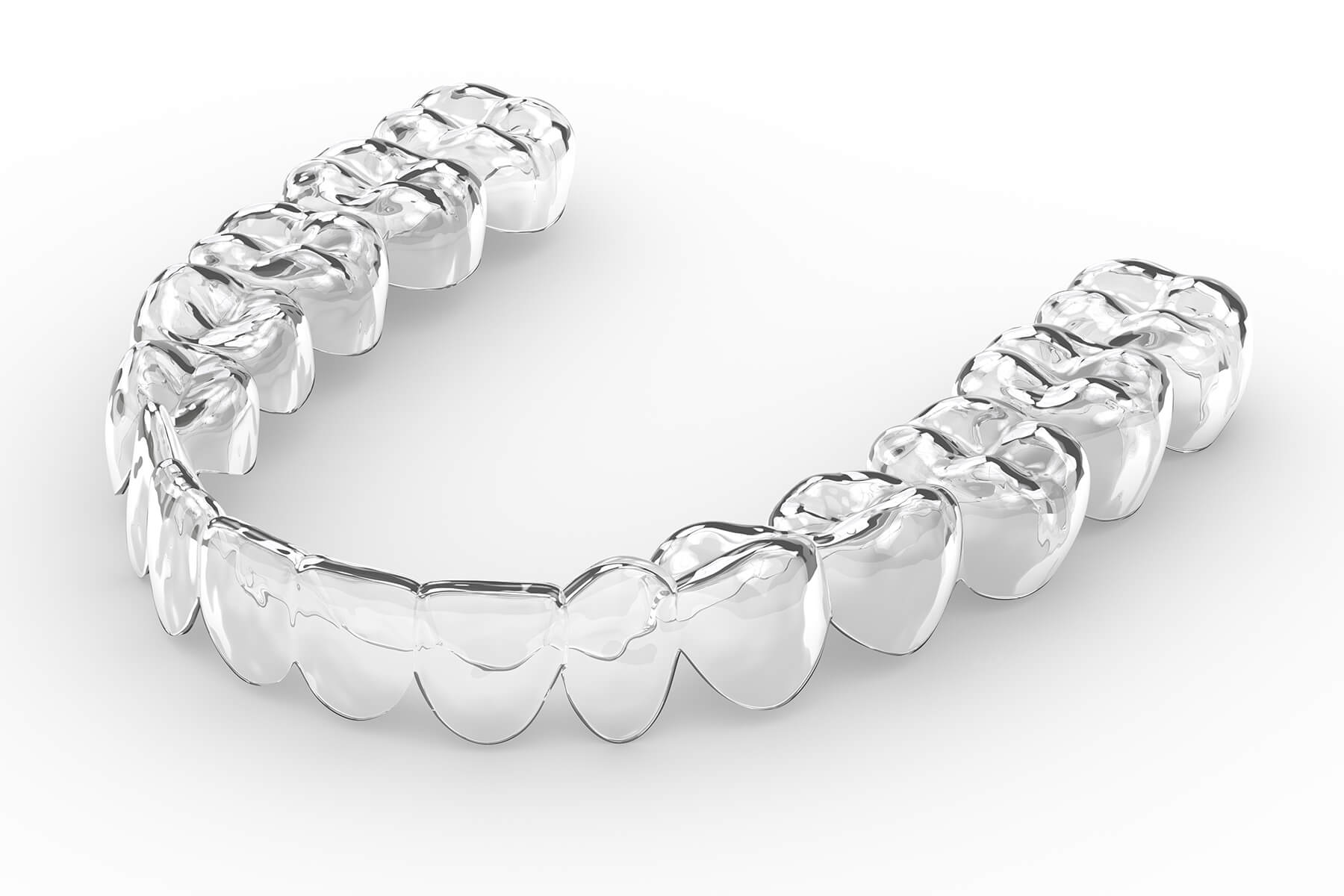Anterior open bite
Open Bite Prescription
- Easy: Less than 2.5 mm is very predictable (better if we do not need posterior intrusion)
- Moderate: 2.5 mm with less than 1 mm of posterior intrusion
- Complex: more than 2.5 mm (auxiliary techniques needed)
POSTERIOR TEETH INTRUSION
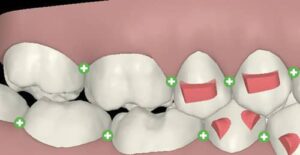
Place 4 mm wide occlusally beveled rectangular attachments on the uppers 4’s and 5’s to support the intrusion of the molars.
Here’s one more tip—overtreat the intrusion of the molars to a 2 mm posterior open bite, as aligners can routinely underperform in this area.
| Class II open bite. Posterior intrusion | Intrude the lower or upper tooth (6 or 7) and place class II elastics from the intruded tooth. Place attachments on other teeth. | 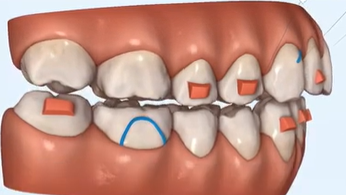 |
ANTERIOR TEETH EXTRUSION
- Anterior extrusion needs space (plan IPR)
2. A strong posterior anchorage is needed for effective extrusion of the upper incisors. This anchorage will be provided by:
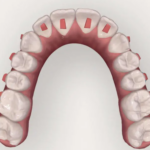
- Not moving the posterior lateral zone during the anterior extrusion
- Horizontal 5mm attachments on 4s/6s
- Four lingual attachments on upper incisors during expansion to increase anchorage (horizontal beveled to gingival attachments).
- Optimized attachments or conventional vertical in canines
Elastics for anterior teeth extrusion
Triangle elastics 3/16 4-6oz 24 hours (upper canines, lower canines and premolars)
Staging for open bite cases
- Start the correction as soon as possible by transversal development of both upper and lower arches: this will provide space for the retrusion of the incisors (relative extrusion)
- During the expansion, it is advisable to use attachments to the lingual surface of the incisors to increase anterior anchorage.
- Postpone absolute extrusion till the end: do not move molars and extrude the upper incisors maintaining torque, remove horizontal beveled to gingival attachments in lingual and exchange them for optimized extrusion attachments by labial (ask for a reciprocal movement of anterior extrusion and posterior intrusion).
- Minor cases might benefit from ‘Chewies’
- Temporary anchorage devices (TADs) should be used to intrude the posterior zone (in cases of a gummy smile) or when the open bite has a skeletal pattern.
RELATIVE EXTRUSION
Relative extrusion can be obtained after expansion if the space opened by the expansion is used to retrocline the incisors:
- Expansion changing posterior torque + simultaneous incisor retraction + Class II elastics to assist incisors retraction
- Reciprocal movement of posterior intrusion 0.5mm + anterior extrusion at the end of treatment
- Optimized attachments (or horizontal beveled to gingival attachments) for upper incisors extrusion
- Anchorage attachments UA4/5
- Optimized/vertical attachment in canines
POSTERIOR INTRUSION
- Posterior intrusion of maxillary and mandibular teeth with consequent upward and forward mandibular closure (anticlockwise rotation of the mandible). This is visualized in the ClinCheck as a virtual jump.
PREDICTABILITY OF VERTICAL MOVEMENTS
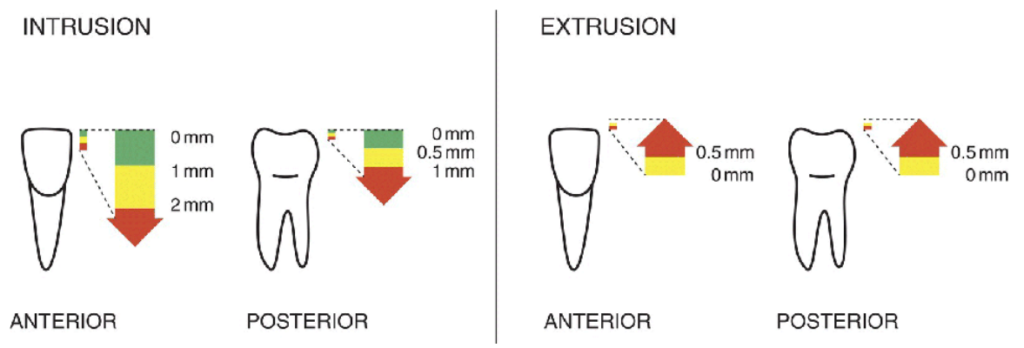
Instructions to the technician:
- Amount of intrusion/extrusion (millimeters – reference, plane or tooth)
- Sequence anterior movements (first – derotate, lastly – intrude or extrude anterior teeth before retraction)
- Elastic placement
- Lower incisors (do not increase incisors display if not needed)



